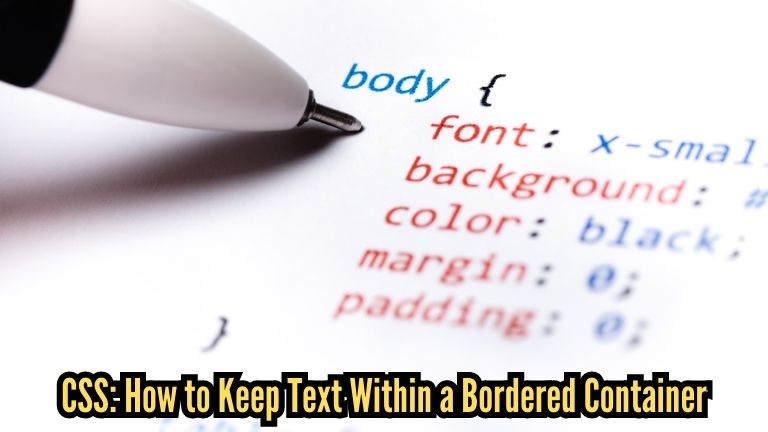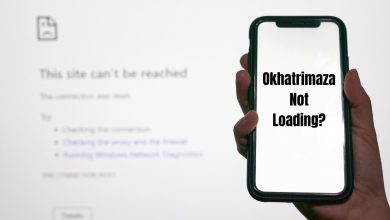CSS: How to Keep Text Within a Bordered Container

When it comes to web design, creating visually appealing and organized layouts is crucial. One common challenge is keeping text within a bordered container.
In this article, we will explore various CSS techniques that will help you achieve this desired effect. By applying these techniques, you can ensure that your text stays neatly contained within its designated area, creating a more polished and professional appearance.
Learn CSS How to Keep Text Within a Bordered Container and create visually appealing web layouts. Explore various approaches like using the overflow property, adjusting padding, employing flexbox and grid layouts, and more. Ensure your text stays neatly contained with these CSS tips.
CSS: How to Keep Text Within a Bordered Container
Let’s dive into the various approaches you can take to keep text within a bordered container.
1. Using the overflow Property
The overflow property is a powerful CSS attribute that can help keep your text within a bordered container. By specifying the value hidden, you can hide any overflowing content and prevent it from spilling outside the container.
.container {
border: 1px solid #000;
overflow: hidden;
}2. Utilizing the text-overflow Property
To control the text behavior within a container, you can employ the text-overflow property. By setting it to ellipsis, you can truncate the text and replace the overflow with an ellipsis, indicating there is more content to see.
.container {
border: 1px solid #000;
white-space: nowrap;
overflow: hidden;
text-overflow: ellipsis;
}
3. Adjusting the padding Property
Adding appropriate padding within the container can create space between the text and the border. This technique ensures that the text remains within the container and doesn’t touch the edges.
.container {
border: 1px solid #000;
padding: 10px;
}
4. Implementing box-sizing Property
The box-sizing property allows you to adjust how the width and height of an element are calculated. By setting it to border-box, the padding and border widths will be included within the specified dimensions, preventing any overflow.
.container {
border: 1px solid #000;
box-sizing: border-box;
}
5. Utilizing Flexbox
Flexbox is a popular CSS layout model that offers excellent control over container sizing and alignment. By using the flex property on the container and adjusting the text’s alignment, you can keep it neatly contained.
.container {
border: 1px solid #000;
display: flex;
align-items: center;
justify-content: center;
}
6. Employing Grid Layouts
CSS Grid Layouts provide a powerful way to organize content into grid structures. By specifying the appropriate dimensions and positioning for the grid cells, you can effectively keep the text within the bordered container.
.container {
border: 1px solid #000;
display: grid;
place-items: center;
}Conclusion
Keeping text within a bordered container is an essential aspect of web design. By employing CSS techniques like overflow, text-overflow, adjusting padding, using flexbox or grid layouts, you can achieve a clean and organized appearance for your text content.
Remember to test your designs across different browsers and consider responsive design principles to ensure optimal user experiences. With these techniques in your CSS toolbox, you can create visually appealing and professional web layouts.



